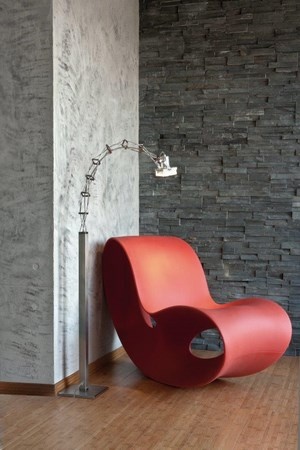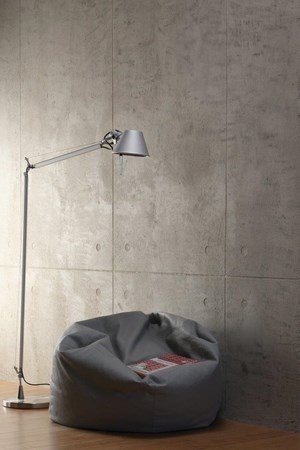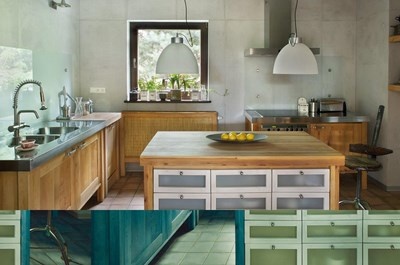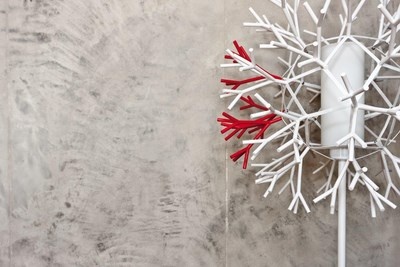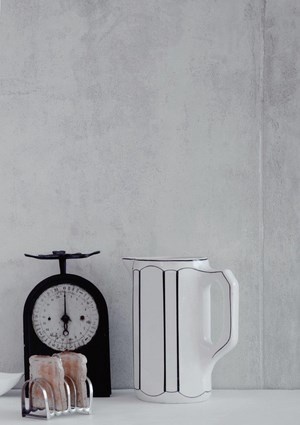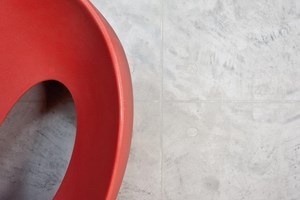- Products
- Systems
- Tools & Services
News
Concrete Effect
Concrete mostly used to be associated with concrete-block buildings filling the central and eastern Europe cities since the middle of the 20th century. Rather massive, gray and ugly. But, currently we are observing a big come back of concrete.
Let’s then discuss this interesting material with Rafał Chojnowski, co-founder of FOX Dekorator Company specializing in decorative techniques.
What are the origins of concrete? Where did it come from?
Concrete was invented in ancient times and was used as an artificial stone. In gothic architecture, the mixture of lime mortar and very fine sand was used for performing repetitive casting and decorative elements. Architects began to use concrete as a decorative material in America in the 1960’s, a few years earlier than in England. It became popular due to the fact that people started to like its harsh character. It is basically a mineral limestone plaster, colored with natural pigments.
Is it true that the decorative concrete is bactericidal?
Decorative concrete consists lime which advantages are known for ages. Lime provides high alkalinity to the material – this prevents the growth of mould and fungi. It is due to the fact that the conditions formed after the application of lime plasters are not favorable for the microorganisms growth. Therefore, concrete can be particularly recommended for allergy sufferers as it eliminates the formation of mould germs which are responsible for the health problems of tenants.
In which areas the effect of concrete performs the best?
When it comes to aesthetic issues and possible wall finishes, the concrete texture is now one of the most up-to-date trends in the field of interior design in both public and residential facilities. If we finish in grey even a small wall surface, it may give the whole room a modern style. Concrete has limited palette of colours – basically it is available in cold shades of gray. On the other hand, it matches perfectly with metal, glass and raw wood. Diverse texture depends on the migration of different fillers towards the plaster surface. These fillers can be represented by grains of sand of different thickness and colour, tiny stones and natural pigments. The colour change is also derived from this phenomenon. The visual effect is strengthened by the change in the reflection angle when the light meets the non-uniform surface.
What are the technical requirements of the product?
Regarding the technical and engineering aspects, the decorative concrete is designed for indoor use, on substrates such as lime or cement-lime plaster, concrete, stone, and all sufficiently sound substrates, providing that they are appropriately prepared. Decorative concrete requires a porous well-bonded substrate, dry, cleaned of old peeling paint coatings, without cracks, free from dust and greasy stains. Surfaces previously painted with distempers must be carefully cleaned until the actual substrate is exposed. Weakly bound substrates should be primed with adequately designed preparations. Concrete can be also used in the zones of high humidity, e.g. in bathrooms, providing it is properly protected from moisture with special impregnants, e.g. wax. Due to their application, we emphasize the surface texture and strengthen the gloss of the gray colour.
How to achieve the “concrete effect”?
This can be done in 4 ways, depending on the intended colour, shade of grey or the final result of the decorative texture. The difference is also easily seen by the contractor and it refers to the way in which the product is applied. Both using a decorative plaster and a decorative paint, we can obtain a matt surface with numerous cavities which are irregularly distributed over the entire surface (effect of corroded concrete) and smooth, matt, satin or shiny surface (the effect of vibrated concrete). The paint is available in limited colours in warm shades of gray. Another way is to use the classic limestone travertine which will give the wall and top quality appearance. It imitates a distinctive surface with visible pitting. Our products can be colored according to the NCS colour scheme in 1500 colours depending on the product groups (there are more acrylic shades and less lime shades). Naturally, in the case of the “concrete effect” there are neutral, cold or warm shades of gray in common use. You can also select the intensity of the colour individually – from very light to intensively dark ones.
Then, when should we apply a decorative plaster, and when a paint?
Each of these products has its advantages; the final appearance of wall is determined by the method of product application. It looks differently depending on a tool one uses – whether it is a roller or a Venetian float with which we efface the surface (at dry state) to obtain a characteristic effect. Plaster is more distinctive product, but for example in case of very high compartments, it is easier to apply concrete paint. Each contractor can choose ones preferred application method.
Should the resulting concrete surface be specially maintained?
Apart from the aforementioned impregnation, it is advised to cover the plaster with a special varnish which strengthens the surface even with only a single coating applied. Depending on the application area and particular effect to be obtained (e.g. significant roughness of the final decorative layer), one may need to apply subsequent varnish coatings and to use relevant application techniques in view of the resulting texture. One may confirm that concrete is well varnished, if the wall gets evenly darker (without visible darker spots) during the application of the subsequent lacquer coating. The applied varnish hardly influences the colour of the concrete surface. However, its gloss can be modified by choosing appropriate varnish gloss, texture to be formed or selecting particular visual effect. Satin varnish improves gloss and makes the colour darker. Matt varnish practically does not change the resulting colour and gloss. We recommend performing a test application on a small surface before using the product on a whole surface, in order to verify compliance with the expected result.
Where contractors can find the information on products and the instruction how to achieve “concrete effect”?
First of all, during the trainings, which are conducted at points of sale or ATLAS Partner Locations. We offer comprehensive trainings in our company office or directly on the construction site – you just need to arrange the date with our regional representative. One can find the list of FOX representatives, information regarding products and instructional videos on the website – www.fox-dekorator.pl.
As since June 2016 any orders on Fox brand products are executed by the ATLAS Customer Service Departments, one can also contact directly the ATLAS market managers.
Original text: Rafał Chojnowski, ATLAS Group
English text: Piotr Marciniak, Michał Gosławski, ATLAS Group
